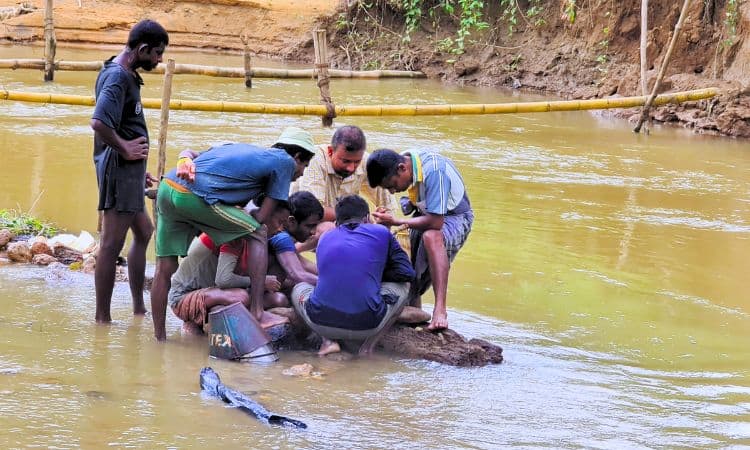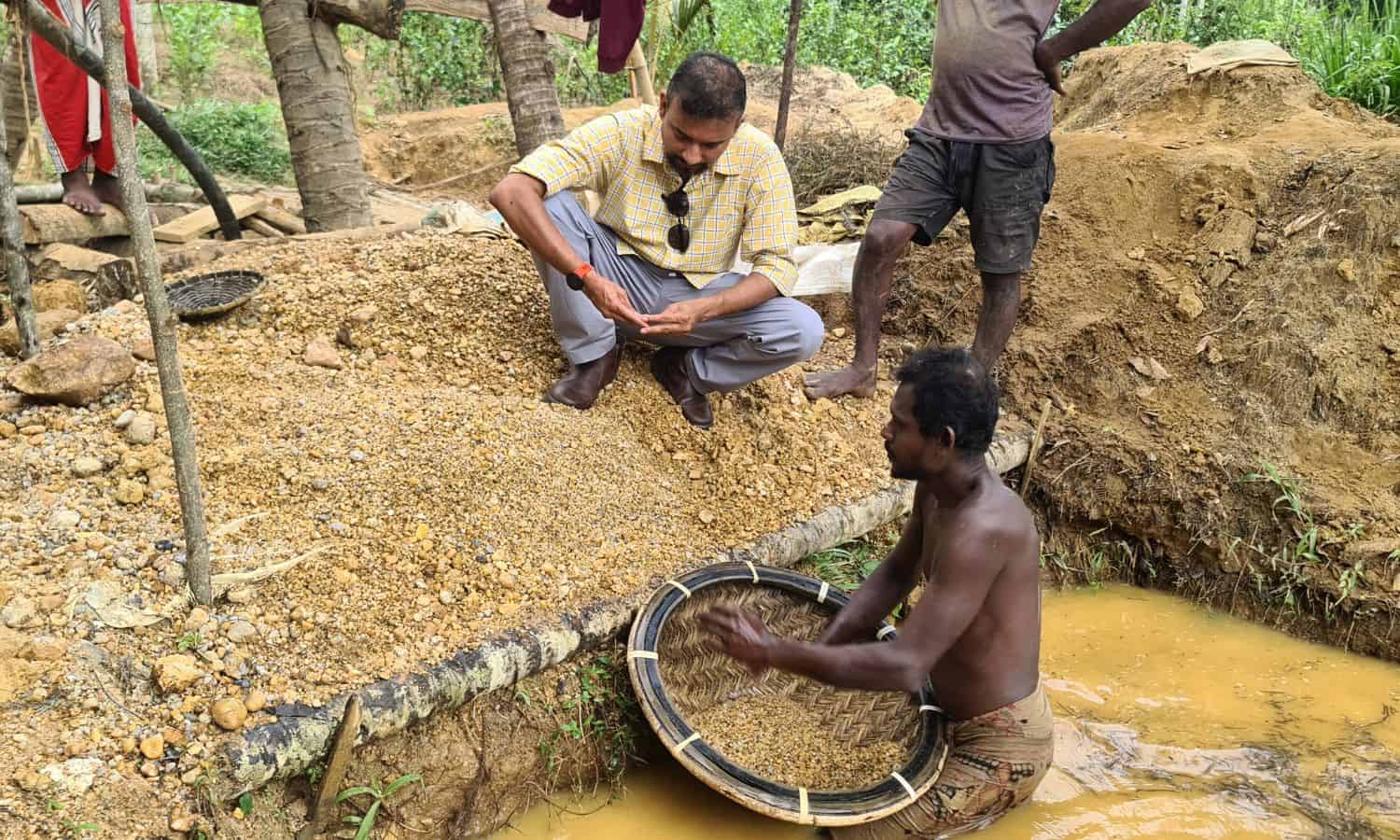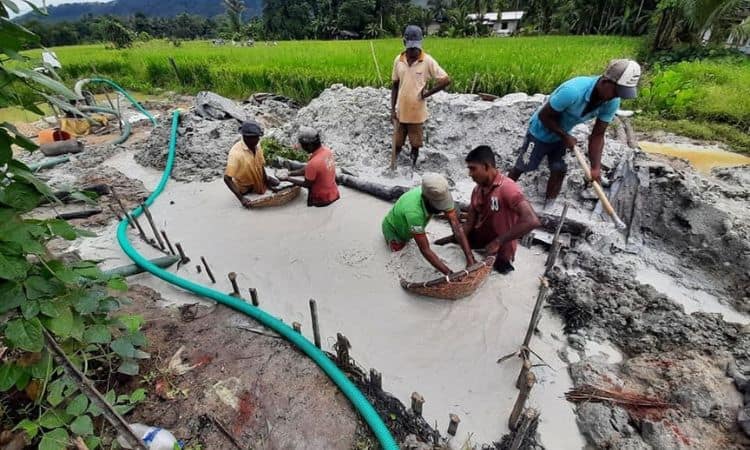Expedition Diary: Exploring Ratnapura’s Gemstone Mines
Expedition Diary: Unearthing the Gems of Ratnapura Mines
Ratnapura, known as the "City of Gems," lies nestled in the verdant hills of Sri Lanka. For over two millennia, this region has been the beating heart of the island’s thriving gemstone industry. Join us as we delve deep into the Ratnapura mines, witnessing firsthand the blend of tradition, community, and sustainability that sets Sri Lankan gemstones apart on the global stage.

sapphire mining in sri lanka in a river
The Legacy of Gem Mining in Sri Lanka
Sri Lanka’s relationship with gemstones stretches back more than 2,000 years, making it one of the oldest mining regions in the world. Ancient chronicles, folklore, and even travelers’ tales have long celebrated the island’s abundance of sapphires, rubies, cat’s eyes, and more. Today, the country enjoys a global reputation for producing some of the world’s finest and most ethically sourced gems.
- 2,000+ years of gemstone mining heritage
- Renowned for sustainable mining practices and minimal environmental impact
- Home to vibrant local communities that uphold traditional methods
Inside Ratnapura: The Heart of the Gem Trade
Ratnapura, meaning "City of Gems" in Sinhalese, sits in the shadow of Sri Lanka’s central highlands. The river valleys and foothills surrounding the city are rich with alluvial deposits—gravel and sediment washed down from ancient mountains over millions of years, carrying with them a treasure trove of precious stones.
Small-Scale, Community-Driven Mining
Unlike the vast mechanized mines seen in other parts of the world, 90% of Sri Lanka’s gemstone mines are small-scale and non-mechanised. Operated by local families and cooperatives, these mines embody a powerful sense of community spirit and shared purpose. Every miner who takes part in the arduous process receives an equal share of the proceeds when a gem is discovered, fostering fairness and mutual support.
- Most mines are run by local families or small cooperatives
- Equal distribution of proceeds ensures fairness and community support
- Licenses for operations are granted for only two years at a time, promoting responsible stewardship
Traditional Mining Techniques: Preserving Heritage & Nature
Expeditioners in Ratnapura will notice thousands of small pits dotting the landscape—a testament to the traditional methods still in use today. Only 5% of mining operations are permitted to be mechanised, ensuring that most extraction is done by hand with simple tools and age-old techniques. This approach minimizes ecological disruption and helps preserve the region’s old-growth forests and delicate river systems.
- Manual excavation of pits, often no more than a few meters deep
- Use of local soil known as illam, which is particularly rich in gemstones
- Strict regulations limit mechanisation, reducing the environmental footprint
The Art of Gem Extraction: From Earth to River
Mining in Ratnapura is as much an art as it is a science. The process begins with the careful excavation of alluvial gravels, which are then transported to nearby rivers. Here, skilled miners use large wicker baskets to wash the gravel, expertly separating precious stones from ordinary rock by hand and sight. This technique, passed down through generations, demands patience, experience, and a keen eye.
- Excavation: Small teams dig pits in gem-rich soil (illam), using simple hand tools.
- Transportation: Excavated gravel is moved to the riverbanks for washing.
- Washing: The gravel is repeatedly washed in river water, allowing heavier gemstones to settle at the bottom.
- Sorting: Experienced eyes scan the remaining sediment for glimmers of sapphires, rubies, and other precious gems.

sapphire mining in sri lanka
Sustainability and Stewardship: The Hallmarks of Sri Lankan Mining
Sri Lanka’s gemstone industry stands out not just for the quality of its stones, but also for a remarkable commitment to environmental sustainability. Mining licenses are granted for short periods, and operations are closely monitored to ensure compliance with strict environmental standards. Miners are careful to avoid damaging old-growth trees and natural habitats, and the small scale of most operations means that land can be easily rehabilitated after mining is complete.
- Short-term licenses encourage sustainable practices
- Non-mechanised methods drastically reduce environmental impact
- Focus on community welfare and fair economic distribution
The Community Connection: More Than Just Mining
What truly sets Ratnapura apart is the powerful sense of community that permeates every aspect of the mining process. From digging the initial pit to celebrating a rich find, mining is a collective endeavor. This approach not only ensures that wealth is shared, but also strengthens social bonds and preserves cultural traditions that have endured for centuries.
- Mining teams operate as tight-knit units with shared responsibility
- Community celebrations mark the discovery of valuable stones
- Skills and knowledge are passed down through generations
Gemstones: From Ratnapura to the World
Once unearthed, the journey of a Ratnapura gemstone is far from over. Stones are carefully sorted, graded, and often cut locally using traditional techniques. The city is home to bustling markets where traders, jewelers, and international buyers come together, each seeking the next dazzling sapphire or brilliant cat’s eye. Sri Lanka’s reputation as a major center for gemstone trading ensures that gems from Ratnapura find their way into luxury jewelry and collections around the world.
Why Ratnapura Gemstones Stand Out
Buyers and collectors are drawn to Sri Lankan gemstones not only for their beauty, but also for the stories they carry—stories of ancient traditions, communal effort, and environmental stewardship. Here’s what makes Ratnapura gems unique:
- Ethical sourcing supported by fair community distribution and sustainable practices
- Exceptional quality and a wide range of gemstone varieties
- Preservation of traditional craftsmanship, from extraction to cutting
- Low environmental impact due to non-mechanised, small-scale mining
Planning Your Own Gemstone Expedition
If the allure of Ratnapura’s gemstone mines has captured your imagination, consider planning a visit. Many local operators offer expeditions where travelers can witness traditional mining first-hand, try their hand at washing illam in the river, and even purchase gems directly from miners or reputable traders. When purchasing, always seek stones with clear provenance and documentation to ensure ethical sourcing.
- Participate in a guided mine tour for an immersive experience
- Engage with local miners and learn about their lives and techniques
- Support sustainable tourism and ethical gemstone trade
Conclusion: Gems with a Conscience
The mines of Ratnapura are more than just a source of precious stones—they are a living testament to Sri Lanka’s enduring traditions, communal values, and deep respect for nature. Each sapphire, ruby, or cat’s eye unearthed here is imbued with the spirit of the land and the hands that brought it to light. Whether you are a collector, a jewelry lover, or a curious traveler, Ratnapura offers a rare glimpse into a world where beauty, ethics, and heritage shine together.
Are you ready to discover the story behind your next gemstone? Plan your expedition to Ratnapura and witness the magic for yourself.



Comments (0)
Write your review